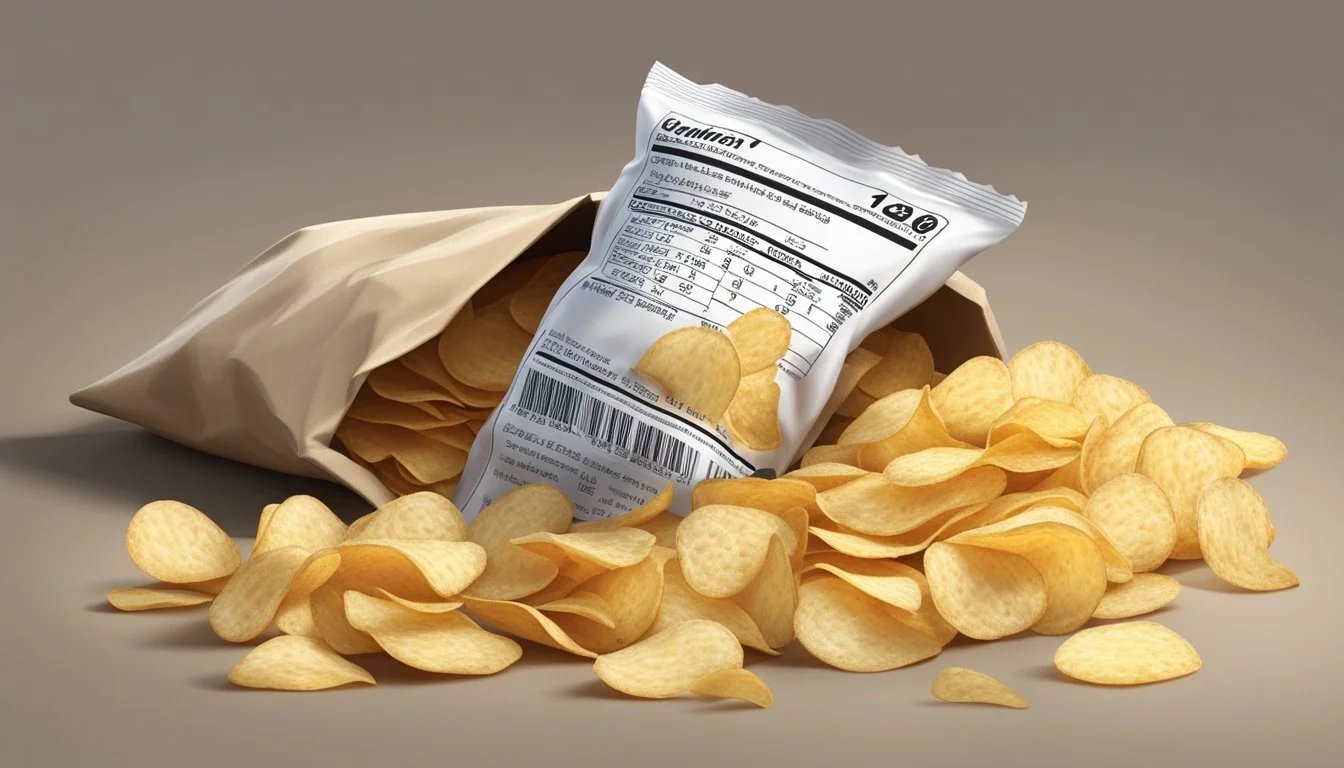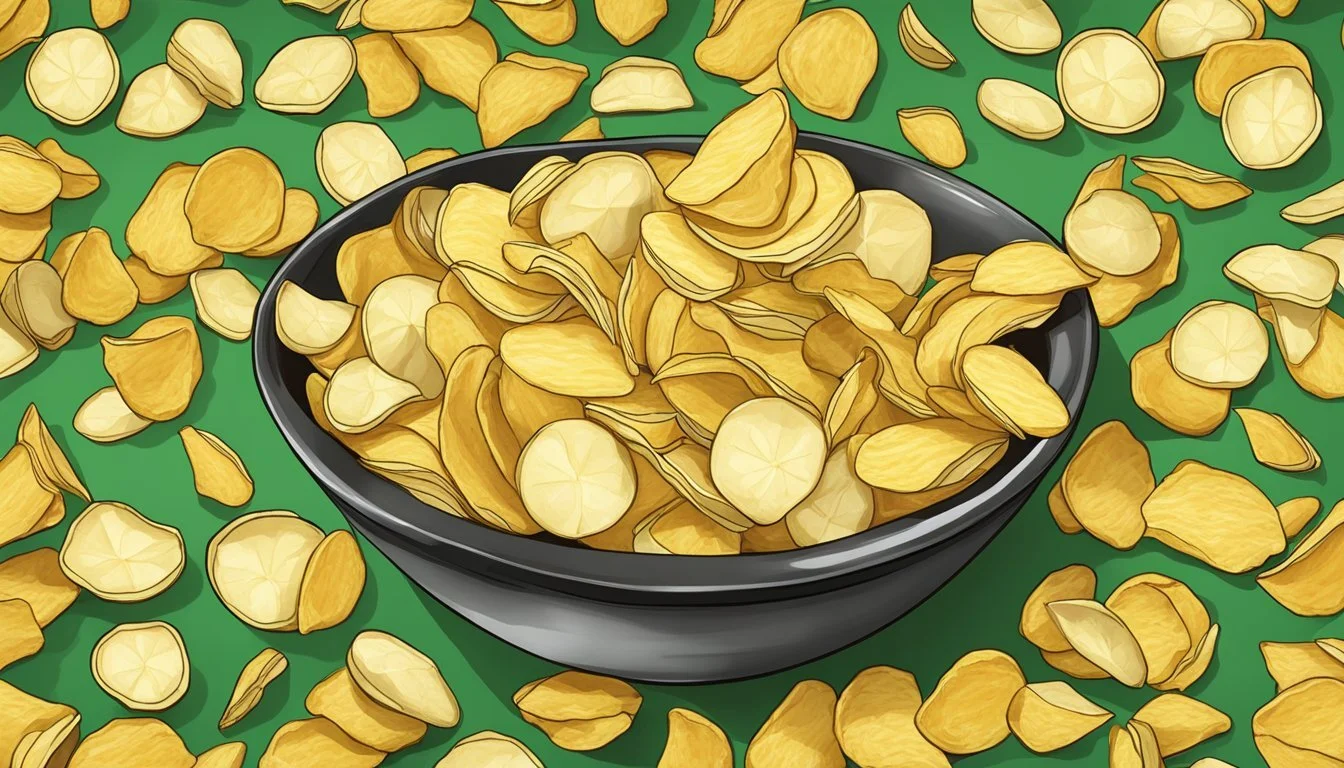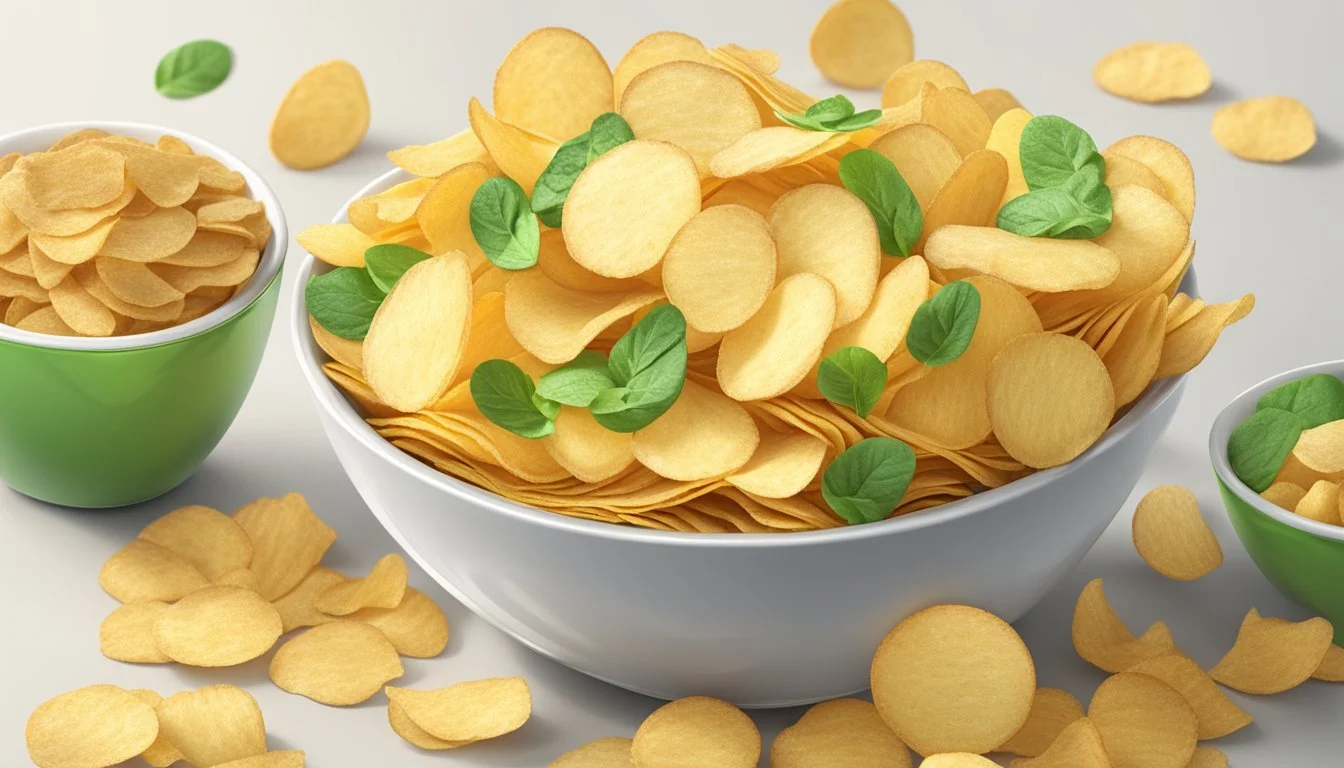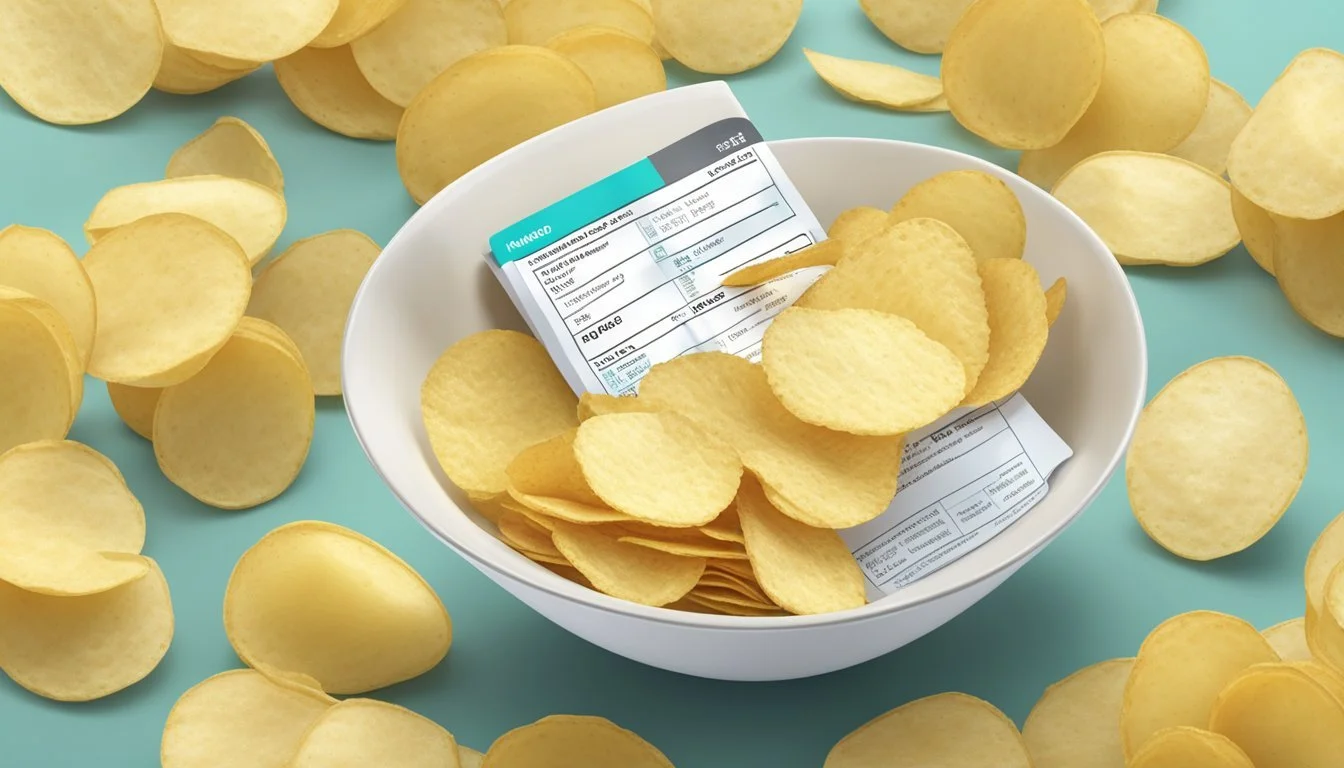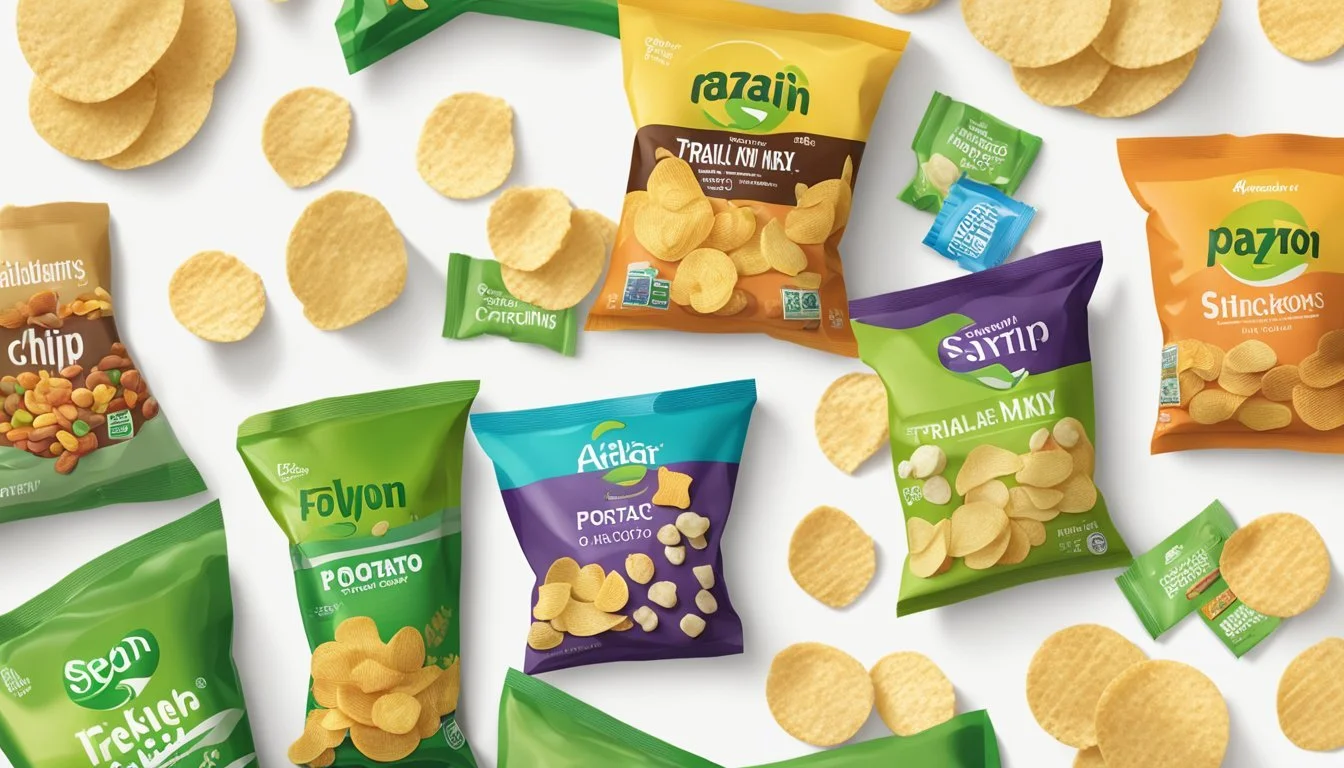How Many Servings of Amazon Fresh Potato Chips Is Too Much
Understanding Healthy Limits
Amazon Fresh potato chips, like other snack options, can be an enjoyable part of one's diet when consumed in moderation. Eating more than an ounce, or roughly 15 chips, per day starts to edge into overconsumption, leading to potential health concerns. Each serving typically contains about 160 calories and 10 grams of fat, making it easy to surpass daily nutritional limits if one isn’t mindful.
Cravings for these chips are common, and it’s important to balance portions with other nutritious foods. Excessive consumption can lead to signs such as bloating and water retention, particularly in the hands, feet, and lips. Incorporating a variety of wholesome snacks can help curb the desire to overindulge in potato chips.
To keep things balanced while enjoying a favorite snack, consider measuring portions and setting limits. Adjusting dietary habits to include a range of healthier alternatives can promote a well-rounded, enjoyable diet without sacrificing taste.
Nutritional Profile of Potato Chips
Potato chips, like Amazon fresh Classic Potato Chips, are a popular snack. Understanding their nutritional profile is essential for making informed dietary choices.
Calories and Macronutrients
One ounce (28.35 grams) of Amazon fresh Classic Potato Chips typically contains about 150-160 calories. These calories are primarily derived from fats and carbohydrates, with a smaller contribution from protein.
Macronutrient Breakdown:
Total Fat: 10 grams, with approximately 1.5 grams of saturated fat.
Carbohydrates: 15 grams, including 1.2 grams of dietary fiber and less than 1 gram of sugars.
Protein: 2 grams.
This combination of macronutrients explains why potato chips are both energy-dense and can be filling, yet easy to overconsume.
Vitamins and Minerals Content
Potato chips offer some vitamins and minerals, though usually in limited quantities.
Key Micronutrients:
Sodium: Approximately 170-190 mg per ounce. This high sodium content can contribute to increased daily intake beyond recommended levels.
Potassium: Around 300 mg, indicating a modest source of this essential mineral.
Vitamin C: Not significant, generally less than 1% of the daily value.
Iron: About 2% of the daily value per serving.
Calcium: Less than 1% of the daily value.
Vitamin B6 and Magnesium: Both present in minor amounts, contributing to overall nutritional value.
While potato chips do provide some essential nutrients, their levels are not substantial enough to be relied upon as a primary source.
Comparison With Other Snacks
Comparing potato chips with other popular snacks reveals interesting contrasts.
Classic Potato Chips vs. Baked Chips:
Baked Chips: Typically lower in fat (7 grams) and calories (120 per ounce).
Standard Chips: Higher fat content (10 grams) and calories (150-160 per ounce).
Potato Chips vs. Pretzels:
Pretzels: Lower fat content but higher in carbohydrates and sodium, with approximately 110 calories per ounce.
Potato Chips vs. Nuts:
Nuts: Higher in both calories and healthy fats, offering more protein and fiber, but also more nutrients like iron and magnesium.
These comparisons highlight that while potato chips are calorically dense, other snacks may offer more balanced nutrition or fewer calories with different nutrient profiles.
Understanding Portion Sizes
Understanding the distinction between portion sizes and serving sizes is crucial for managing dietary intake effectively. This section will explore what constitutes a recommended serving size and how to use food labels to make informed choices.
Recommended Serving Sizes
A serving size for Amazon Fresh potato chips typically aligns with that of similar snack foods: about 1 ounce or 15 chips. This serving size generally contains around 160 calories and 10 grams of fat, depending on the flavor.
Daily recommended servings vary by food group. For grains and starchy vegetables, 6-11 servings are suggested daily. For non-starchy vegetables, the recommendation is 3-5 servings. Knowing these numbers helps in balancing snack intake within a healthy diet.
Here are some standard serving sizes for various food items:
1 slice of whole grain bread
1/3 cup of cooked rice
8 fluid oz of 100% fruit juice
2 oz of cheese (about the size of a domino)
Understanding these sizes ensures that snacks fit within broader dietary guidelines without excessive calorie intake.
The Role of Food Labels
Food labels are essential tools for managing portion sizes and nutritional intake. The Nutrition Facts label found on packaging provides serving size, calories, and daily values for various nutrients.
For example, if the label states the serving size is 15 chips with 160 calories, consuming 30 chips would double the caloric and nutrient intake. This guideline helps in understanding how many servings are consumed.
Key features to check on a Nutrition Facts label include:
Serving Size: Indicates the amount typically consumed at one time.
Calories: Total energy provided per serving.
Daily Value (%DV): Shows how each nutrient in a serving contributes to a daily diet.
By paying attention to these labels, consumers can better manage their snacking habits within their overall dietary goals.
Health Considerations
When it comes to consuming Amazon Fresh potato chips, monitoring your intake is crucial. Key factors include maintaining a healthy weight, managing blood pressure, and ensuring overall dietary balance.
Weight Management
Eating potato chips frequently can lead to weight gain due to their high calorie content. Many store-bought chips are deep-fried and contain unhealthy fats. These fats are not only calorie-dense but also linked to obesity. Modifying portion sizes and minimizing fried potato chips in your diet can help manage weight effectively.
Dietitians recommend opting for smaller servings or choosing baked alternatives, which are lower in calories. Monitoring servings is key as overconsumption may disrupt efforts to lose or maintain weight.
Blood Pressure and Heart Health
Excessive intake of potato chips can negatively impact heart health. Chips are often high in sodium, which can contribute to high blood pressure—a significant risk factor for heart disease. The Dietary Guidelines for Americans advise limiting sodium to maintain healthy blood pressure levels.
Lowering consumption of salty snacks like potato chips can reduce the risk of hypertension. Instead, consider snacks with lower sodium content to protect cardiovascular health.
Balance Within a Healthy Diet
Ensuring variety in a balanced diet is essential. Excessive potato chip consumption can displace more nutritious foods, leading to nutrient deficiencies. Potatoes themselves are low in vitamin C and other essential nutrients, so relying on them heavily in your diet can create imbalances.
A balanced diet should include a mix of vegetables, fruits, and whole grains. Including a variety of these can help maintain proper blood sugar levels and prevent health problems such as diabetes. Consulting with a dietitian can provide personalized advice on integrating snacks into a healthy eating plan.
Interpreting Dietary Guidelines
Understanding the recommended daily intake and adjusting for individual factors like physical activity and metabolism is crucial when determining how many servings of Amazon Fresh potato chips is too much. Each person's needs vary, so it's important to consider these factors.
Daily Intake Recommendations
The Dietary Guidelines for Americans suggest that adults consume 4 to 6 cups of starchy vegetables per week. Given this, consuming potato chips in moderation is key.
A serving of Amazon Fresh potato chips, approximately 1 ounce, contains around 160 calories and 10 grams of fat. Excessive consumption can lead to high calorie and fat intake, adversely impacting health.
Monitoring how many servings of potato chips fit into your daily calorie requirements is essential. Using tools such as nutrition labels can help you keep track of servings. It's recommended to limit high-calorie snacks and replace them with healthier alternatives when possible to maintain a balanced diet.
Adjusting for Physical Activity and Metabolism
Physical activity and metabolism significantly influence dietary needs. Those with higher physical activity levels may require more calories, potentially allowing for occasional indulgence in snacks like potato chips without excessive calorie surplus.
Metabolism varies between individuals. Faster metabolisms can process calories more efficiently, meaning some may afford more leniency in snack choices.
However, regardless of metabolism, it's still important to prioritize nutrient-dense foods. Despite burning more calories, high amounts of fats and sodium can still affect health. To enjoy potato chips sensibly, balance them with regular exercise and a varied, nutrient-rich diet.
Adjust snack intake based on these factors to align with personal health goals and dietary recommendations.
Alternatives to Potato Chips
When looking to replace potato chips in your diet, consider choices that provide nutritional benefits, such as promoting a healthy diet, including fewer calories, and adding more whole foods, vegetables, and healthy fats.
Healthy Snacking Options
Healthier snacks can reduce the intake of unhealthy fats and high amounts of sodium found in regular potato chips. Vegetables like carrot sticks, cucumber slices, and bell pepper strips paired with hummus offer a crunchy and satisfying alternative while boosting fiber intake. Fruit slices are another option, providing natural sweetness and essential vitamins.
Nuts and seeds, such as almonds, walnuts, and sunflower seeds, offer healthy fats and protein that help you stay full longer. Greek yogurt paired with berries or a drizzle of honey adds protein and probiotics. For those with a taste for something savory, whole grain crackers with guacamole or a piece of chicken breast can be both nutrient-dense and filling.
Homemade Potato Chips
Making potato chips at home allows control over the ingredients and cooking methods, promoting a healthier version of a favorite snack. Using sweet potatoes instead of regular potatoes can introduce more fiber and vitamins, such as vitamin A. Baking the chips instead of frying them reduces unhealthy fats.
A small amount of olive oil can be used for baking, adding healthy fats. Season with a variety of herbs and spices for flavor without added calories. Leafy greens like kale can also be transformed into chips by baking them with a bit of olive oil and salt, providing a crunchy texture with fewer calories.
Preparing chips at home ensures cleaner, whole ingredients and allows for innovative variations, promoting a healthier snacking habit.
Cooking Methods and Impact on Health
Different cooking methods can significantly affect the nutritional value and health impact of potato chips. The two primary methods are baking and frying, each with distinct differences in fat content, nutrient retention, and overall health implications.
Baked Versus Fried Chips
Baked chips are often considered healthier than fried chips. Fried chips typically contain higher levels of total fat and calories due to the oil used in the cooking process. For example, an ounce of fried chips has approximately 150 calories and 10 grams of fat.
Baking potato chips reduces the fat content substantially, often by about 50%. Despite this, baked chips may have fewer vitamins and minerals, such as potassium and vitamin C. Regular chips generally provide more of these essential nutrients.
Process impacts: While frying exposes chips to high temperatures in oil, baking involves cooking at a steady heat. This process reduces the risk of creating acrylamides, chemical compounds formed when starchy foods are cooked at high temperatures.
Healthy Cooking Techniques
There are alternative cooking methods that can make potato chips even healthier. Roasting and steaming are effective ways to prepare homemade chips with minimal added fats.
Roasting: Preheat the oven and use a light spray of healthy oil before cooking. This method maintains a crunchy texture without excess grease.
Steaming: Cooking potato slices in a steamer before drying them can lock in nutrients. The chips can then be lightly baked to achieve a crispy consistency.
Using dry cooking techniques can help retain nutrient content while reducing fat. These practices align with a healthier diet by minimizing the intake of processed foods and added oils. Simple homemade preparations can often be more beneficial than store-bought options.


